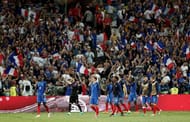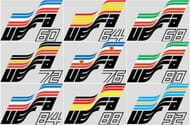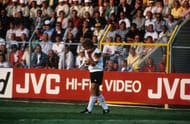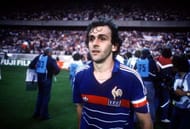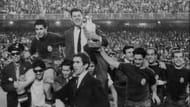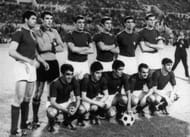The 15th edition of the European Championships – the UEFA Euro 2016 – kicked off in France with a victory for the host nation, thanks to a late strike by one of Premier League’s story of the season, Dimitri Payet. As the glorious event rolls towards a close, many new and unique records have been and will be created. Here’s a look at some facts and figures about the European Championships that most of us are unaware of.
#9 When Germany appeared on the scene
The first three editions of the tournament (i.e. 1960, 1964 and 1968) saw Germany (then West Germany) skip the tournament altogether. In the 1972 tournament, West Germany made their way through the qualifications stage. The finals that year were held in West Germany and Gerd Müller propelled the hosts to their maiden title, scoring 4 of all 5 goals scored by them.
It is now well known that Die Mannschaft, since then, have registered the most number of finals appearances with 12 of those in their kitty.
#8 An affair of four
Modern day European Championship finals are typically held among 16 teams divided into 4 groups. But until the 1976 Euro was held in Yugoslavia, the finals only consisted of four teams that squared off against each other in four knockout games. Two semi-finals decided the finalists, whilst the losers of those two matches faced each other in a third place playoff.
This changed in the 1980 (Italy) edition of the tournament when 8 teams were let through and divided into two groups of four. The number doubled to 16 in 1996 (England). Eight more teams were added to this in the 2016 France edition.
YEAR | HOSTS | NUMBER OF TEAMS |
| 1960 | FRANCE | 4 |
| 1964 | SPAIN | 4 |
| 1968 | ITALY | 4 |
| 1972 | WEST GERMANY (NOW BELGIUM) | 4 |
| 1976 | YUGOSLAVIA | 4 |
| 1980 | ITALY | 8 |
| 1984 | FRANCE | 8 |
| 1988 | WEST GERMANY | 8 |
| 1992 | SWEDEN | 8 |
| 1996 | ENGLAND | 16 |
| 2000 | BELGIUM & NETHERLANDS | 16 |
| 2004 | PORTUGAL | 16 |
| 2008 | AUSTRIA & SWITZERLAND | 16 |
| 2012 | POLAND & UKRAINE | 16 |
| 2016 | FRANCE | 24 |
#7 Arrivederci playoffs
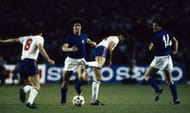
From the first edition of UEFA Euro, the losing teams of the semi-finals squared off in a playoff match that decided the third and fourth placed teams in the tournaments. This match-up continued to be held for the first six instalments of the tournament. Czechoslovakia faced Italy in the 1980 UEFA Euro playoff and the matched went into the penalties. After 8 successful takes, it was Fulvio Collovati whose shot was stopped by Netolika, handing Czechoslovakia the third place.
However, witnessing a drop in the viewership of the tournament, UEFA decided to discontinue this particular fixture in the 1984 Euro, also held in France. In all the subsequent editions, losers of the two semi-finals were left high and dry.
#6 First and only time lucky Russia
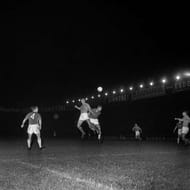
The inaugural UEFA Euro held in France was won by Soviet Union (now Russia), after defeating Yugoslavia 2-1 in extra time in the final. Milan Gali’s strike put Yugoslavia ahead in the 43rd minute, but their joy was turned to dust shortly after the half-time when Slava Metreveli struck home for the Soviet Union. In the 23rd minute of extra time, Viktor Ponedelnik scored the winner for the eventual Champions.
This turned out to be the only major international success story for Russia till date.
#5 Copy-paste: Same logo design for 9 editions
The logos of all the UEFA Euro competitions were identical during the first 9 editions. The logos featured strips of colour matching that of the host nation with the year of the tournament and “UEFA” written below it. The first customised logo in any European Championships was used in the 1996 edition that was held in England.
#4 The curious case of C.I.S.
Politics has far-reaching effects in every aspect of our lives. And sometimes these effects give rise to bizarre, unprecedented circumstances, like this one.
USSR had secured a finals berth in the 1992 UEFA Euro that was to be held in Sweden. The qualifiers ended sometime in 1991, however, from January 1st, 1992, USSR formally ceased to exist and was broken up into 15 federal nations.
In order to preserve the spot secured by USSR, the Association of Football Federations of C.I.S. was formed on January 11th, 1992, under which players of all 15 federal nations were offered a chance to play for a unified team that was to last only until the end of UEFA Euro 1992.
The CIS football team played its first match against USA in Miami and won 1-0. CIS was disbanded with their exit from UEFA Euro 1992 after a 3-0 thrashing at the hands of Scotland.
#3 Michel Platini prevails
France won the first UEFA Euro in 1984 in front of their home crowd, and the legend in picture above was instrumental in it. Platini came into the tournament after a red-hot run of form for Juventus. He scored in all five of the matches that France played en route to the title, which included two hattricks.
His tally of 9 goals by a player in a single finals tournament remains unbeaten till date. Reckon we have a contender to beat this?
#2 The Spanish grudge
The inaugural UEFA Euro had some notable absentees, including West Germany, Italy and England. However, the Spanish probably had the most politically relevant reason to pull out of the tournament. Spain was required to travel to USSR in order to play a qualification match against the latter. However, the then Spanish dictator was holding a grudge against USSR for supporting the Second Spanish Republic in the Spanish Civil War (1936-39).
Four years later, Spain hosted and won the European Championships. And take a guess who they faced in the final. It was USSR, whom they eventually defeated 2-1.
Back then, this victory was translated as the triumph of Fascism over Communism. But all we saw were the curious ways of the footballing deity.
#1 When the final was replayed
We’re back to the 1968 European Championships held in Italy. After the hosts had made it past USSR, thanks to a rather favourable flip of a coin, it was Yugoslavia who were standing between them and their maiden European triumph. The final took place on June 8th, 1968 in Rome in front of 68,000 Italian supporters who were hushed by Dragan Daji with his strike in the 39th minute. Seemingly headed for a mind-numbing defeat, Angelo Domenghini pulled an equaliser out of nowhere 10-minutes before time. The match ended in a draw after 120 minutes of play. This time, however, the fate was not kept for a coin to decide.
Officials opted for a replay of the final on June 10th at the same venue. Visibly upset by their team’s display, less than half of the Azzurri supporters from the previous game turned up for the replay. What they missed was a clinical display of football by Italy as they comfortably defeated their rivals 2-0. To this day, this match remains firmly etched in the minds of the witnesses.
